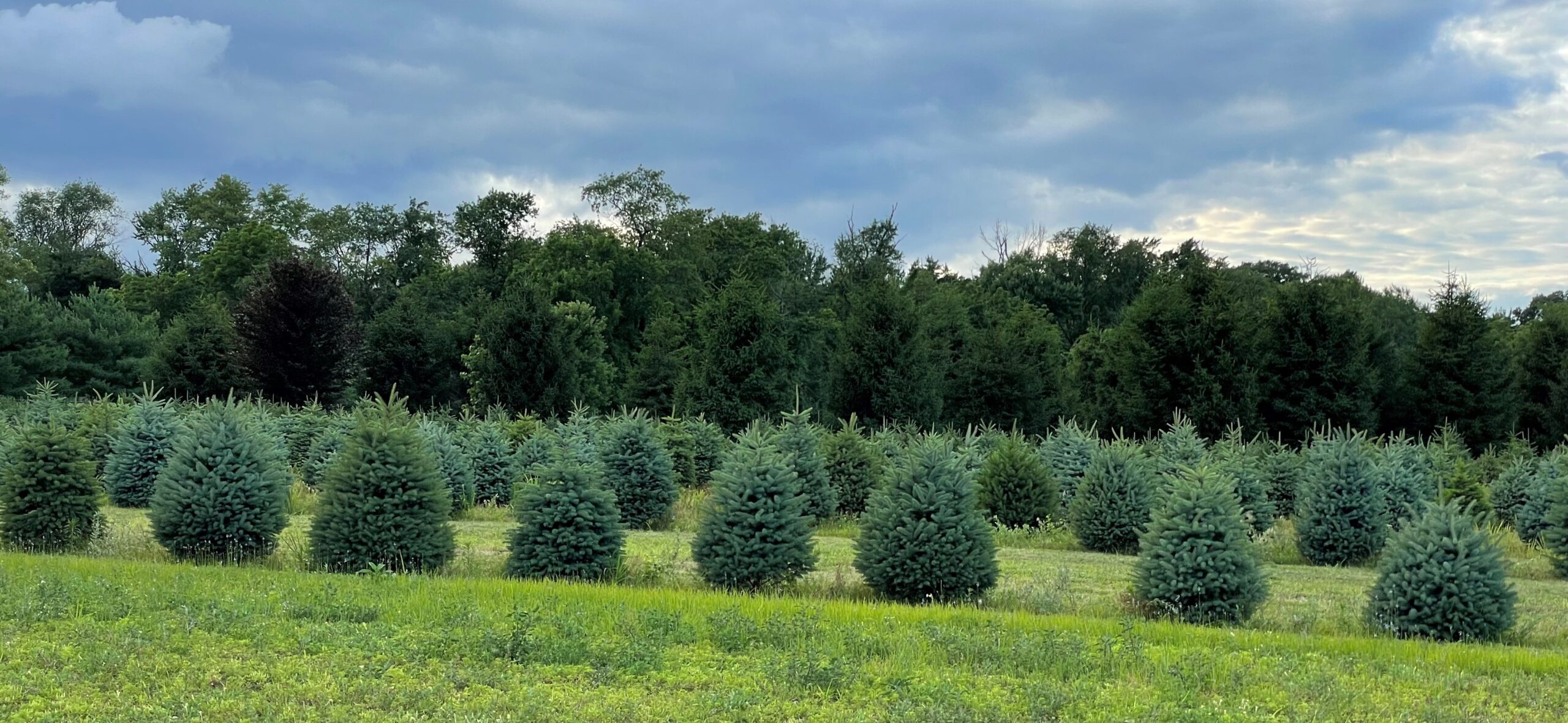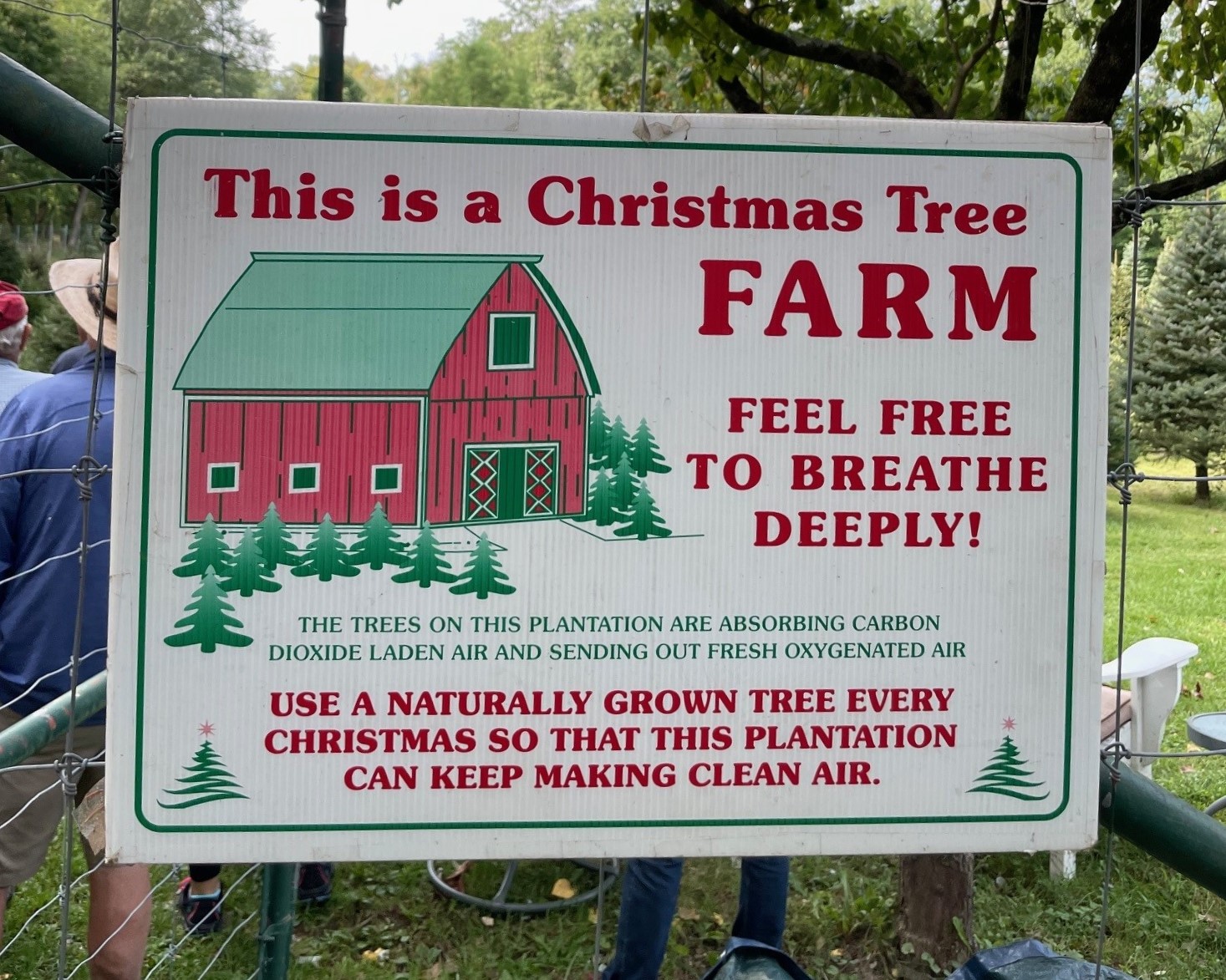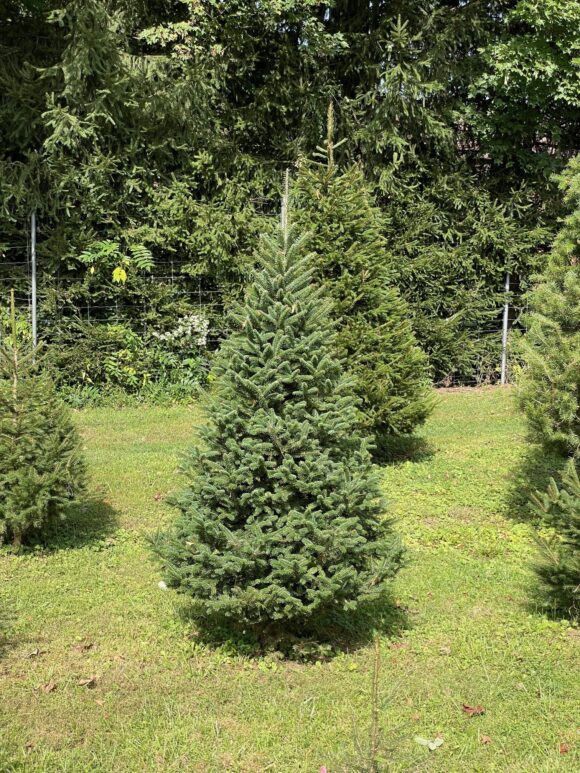
Cut your own Christmas tree at The Village Tree Farm in Green Village, NJ. Photo credit: William Errickson.
December is here, and that means Christmas is right around the corner! Holiday tunes are playing in nearly every store, houses covered in colorful lights line neighborhood streets, and there’s a sense of joy in the air. You may have even brought the festivity inside your home with a real Christmas tree, welcoming in the season’s spirit. Whether you’re swapping out a fake Christmas tree for a real one or are a real Christmas tree enthusiast, here are some Christmas tree facts, tips, and tricks to make the maintenance of a real Christmas tree easier this holiday season.
Growing Christmas trees is a long-term commitment, taking 7-10 years to develop fully. While they grow, they sequester carbon from the atmosphere and store it in the tree’s roots, needles, and branches. The roots of the Christmas trees also help stabilize the soil by sequestering carbon, and farmers will often leave the roots after cutting down the Christmas tree. The carbon that was sequestered in the roots then remains in the soil as they slowly break down over time.
William Errickson, agricultural agent for Rutgers Cooperative Extension of Monmouth County, works with farmers, nursery growers, landscapers, and Christmas tree growers throughout the state. He regularly attends meetings for the New Jersey Christmas Tree Growers’ Association (NJCTGA), which comprises local and family-owned Christmas tree farms whose mission is to ensure the tradition of real Christmas trees in people’s homes.

Sign from The Village Tree Farm in Green Village, NJ. Photo credit: William Errickson.
Having a real Christmas tree in your home helps support local farmers and the local economy and has enormous environmental benefits. Errickson also emphasized the importance of recycling Christmas trees and its environmental benefit. Recycled Christmas trees can be turned into mulch, adding soil organic matter back into the Earth, sequestering even more carbon, and adding nutrients.
Climate change has significantly impacted Christmas trees — because they take 7-10 years to grow and endure years of unseasonable temperatures, droughts, and heat stress. When the trees are stressed due to extreme temperature fluctuations, they become more susceptible to insects and diseases.

Christmas trees ready for harvest after growing for seven years at Kenlin Tree Farm, Edgewater Park, NJ. Photo credit: William Errickson.
When looking for a real Christmas Tree this year, consider Errickson’s Christmas Tree Do’s and Don’ts:
- Make sure you’re picking the correct species. Norway Spruce trees should be purchased closer to Christmas because they don’t hold their needles as long as Douglas or Fraser firs, for example.
- The tree’s trunk should be straight, and the branches should be flexible, not brittle, or easy to snap.
- Run your hand along the tree’s needles, and pick one with strong needles that don’t fall off.
- Ensure there’s a fresh cut at the tree’s base to take up water easily.
- Once you bring your tree inside, get it into water immediately. It should sit in a water stand that you check daily to ensure the tree gets enough water.
- Keep the tree in a cooler area of the house.
Christmas tree fun facts:
- The country’s first “cut your own” Christmas tree farm was in Mercer County, New Jersey, and opened in 1901. Each Christmas tree sold for a dollar.
- New Jersey has about 5,000 acres of Christmas trees currently being grown.
- Eastern White Pine trees have less aroma than other Christmas trees, which benefits people with allergies or sensitivities.
This article was written by OPOC intern Emily Ranieri.

